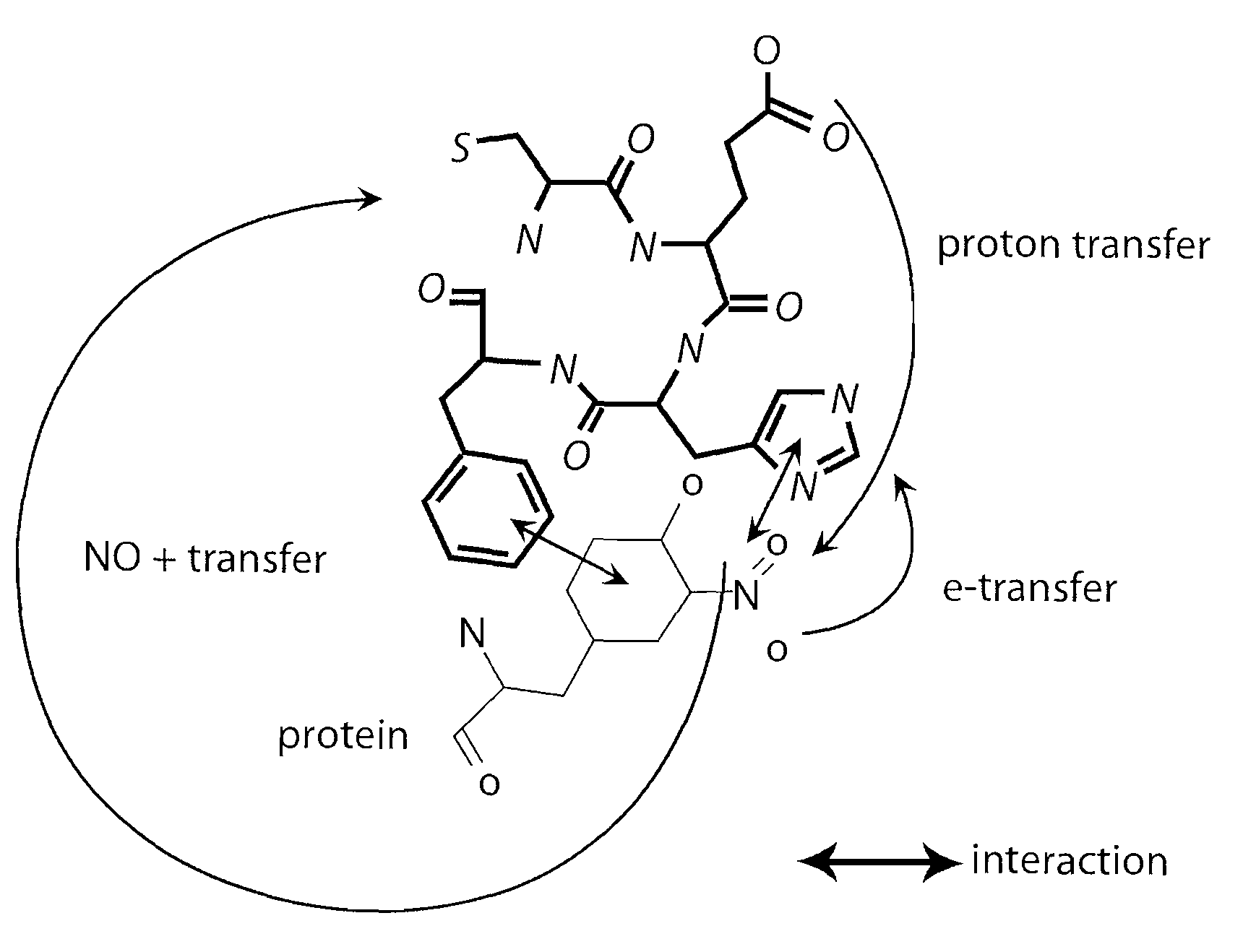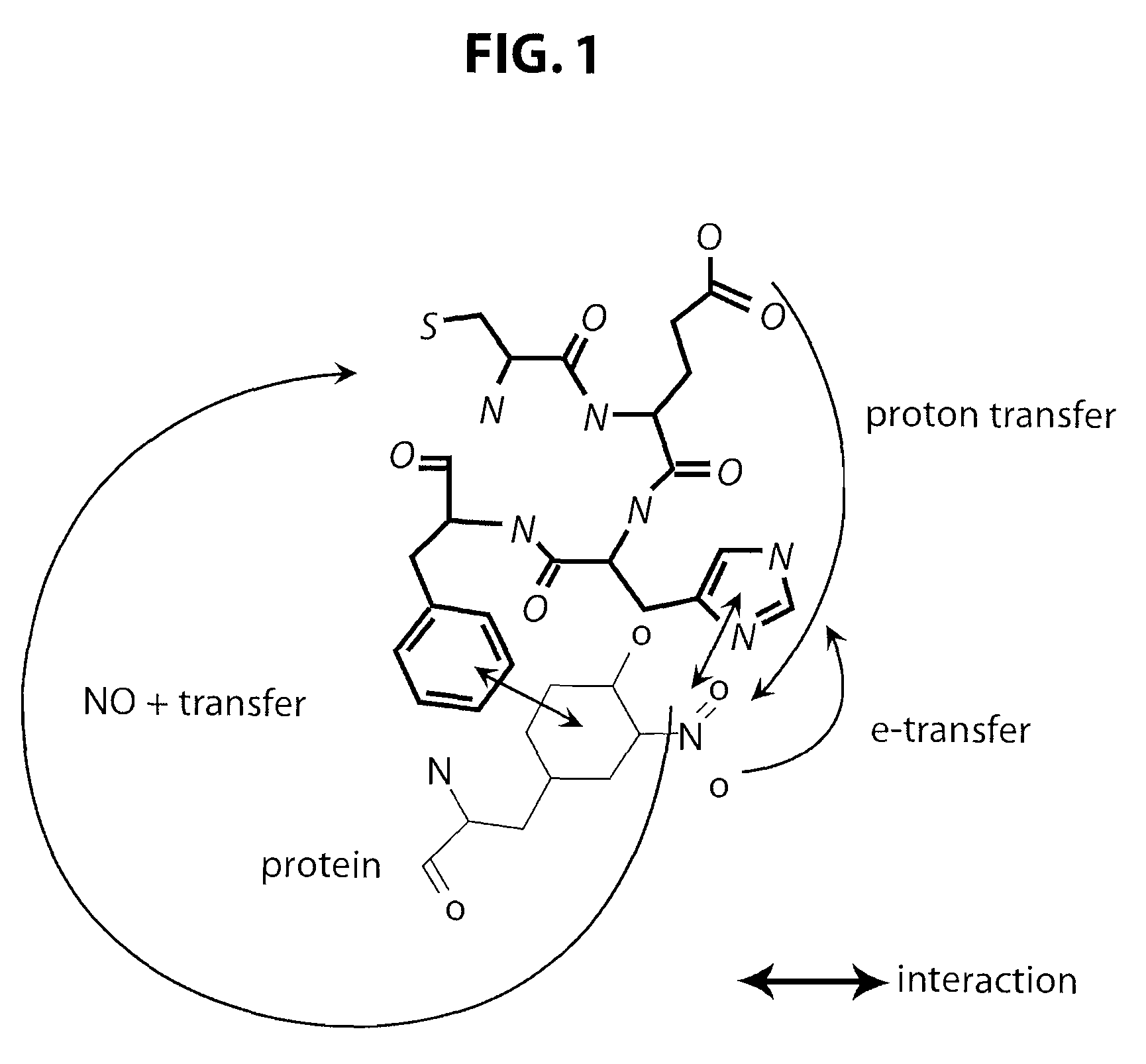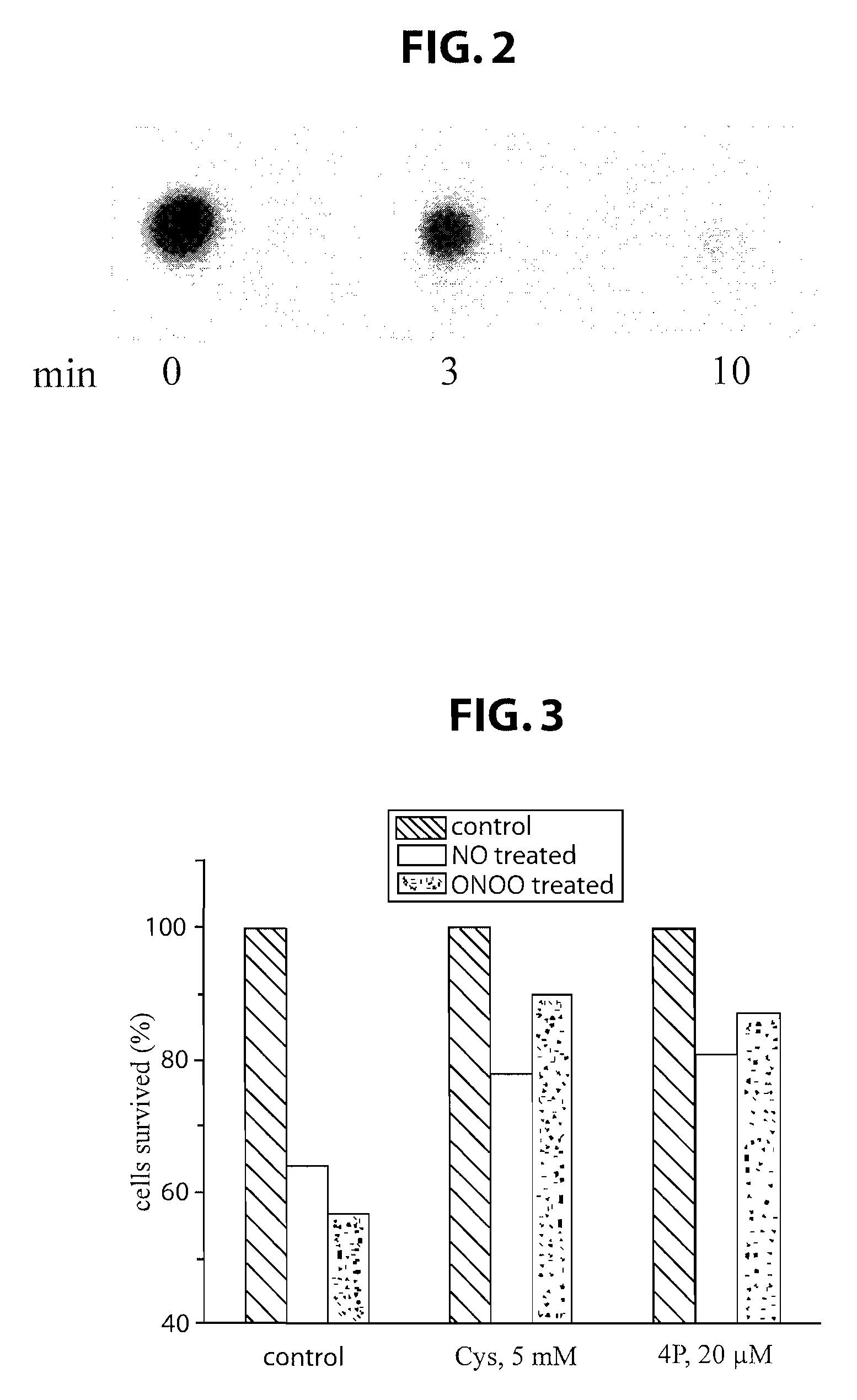Short peptides useful for treatment of ischemia/reperfusion injury and other tissue damage conditions associated with nitric oxide and its reactive species
- Summary
- Abstract
- Description
- Claims
- Application Information
AI Technical Summary
Benefits of technology
Problems solved by technology
Method used
Image
Examples
example 1
Identification of CEFH Peptide as Efficient Compound for Mediating Denitration of 3-Nitrotyrosine In Vitro
[0198]The CEFH peptides were designed using the free docking software program, ArgusLab 4.0 (available on the World Wide Web at planaria-software.com / arguslab40.htm), to calculate the interaction energy between molecules. L-CEFH peptide and D-CEFH peptide were synthesized and purified by New England Peptides Inc (Gardner, Mass.) and GL Biochem Ltd. (Shanghai), respectively, using a standard solid phase Fmoc protocol. D-CEFH was synthesized since this peptide is less prone to proteolysis compared to its L-CEFH counterpart. Peptides without His or Cys did not work.
[0199]Several groups have previously reported an in vivo denitration phenomenon (e.g., Kamisaki et al (1998) Proc Natl Acad Sci USA 95: 11584-11589; Aulak et al (2004) Am J Physiol Heart Circ Physiol 286: H30-H38). However, they tried to isolate denitration activity using pure 3-NT and failed. The present inventors have ...
example 2
CEFH Peptide Efficiently Reduces Cell Death Mediated by Nitric Oxide and Peroxynitrite
[0201]The ability of the L-CEFH peptide (Cys-Glu-Phe-His; SEQ ID NO: 1) to reduce cell death caused by nitric oxide (NO) and peroxynitrite (ONOO−) was tested in cell culture. Following treatment with NO / ONOO−, HeLa cells were incubated with either a control buffer, 5 mM cysteine, or 20 μM L-CEFH peptide for 40 minutes. The percentage of cells surviving was determined by a MTS-based assay (available from Promega, Madison, Wis.). As shown in FIG. 3, as compared to “no treatment” control, both cysteine (Cys, at 5 mM) and L-CEFH peptide (4P, at 20 μM) improved HeLa cell survival to the same extent (i.e., by 60-80%). Importantly, the L-CEFH peptide showed the same efficacy as cysteine, when used at 250 times lower concentration.
example 3
CEFH Peptide Reduces Myocardial Ischemia-Reperfusion Injury and 3-Nitrotyrosine Accumulation In Vivo
[0202]The effect of the L-CEFH peptide (Cys-Glu-Phe-His; SEQ ID NO: 1) on the extent of myocardial ischemia-reperfusion (MI / R) injury and on the accumulation of 3-nitrotyrosine (3-NT) in myocardial tissue upon myocardial infarction was tested in a rat model in vivo.
[0203]Myocardial ischemia (MI) was produced in anaesthetized adult male Wistar rats (300-350 grams) under controlled ventilation. After thoracotomy at the fourth intercostal space, the heart was exteriorized and a 6-0 silk ligature was passed under the left coronary artery with a needle. After 30 minutes of MI, the ligature was released and the myocardium was reperfused for 1 hour. Rats were randomized 5 minutes after the beginning of reperfusion to receive either vehicle (control, n=6) or L-CEFH peptide (0.7 mg / kg; n=9) i.v. The extent of MI / R injury, or infarct size, was determined by calculating the ratio of the area of...
PUM
| Property | Measurement | Unit |
|---|---|---|
| Dimensionless property | aaaaa | aaaaa |
| Composition | aaaaa | aaaaa |
| Cell death | aaaaa | aaaaa |
Abstract
Description
Claims
Application Information
 Login to View More
Login to View More - R&D
- Intellectual Property
- Life Sciences
- Materials
- Tech Scout
- Unparalleled Data Quality
- Higher Quality Content
- 60% Fewer Hallucinations
Browse by: Latest US Patents, China's latest patents, Technical Efficacy Thesaurus, Application Domain, Technology Topic, Popular Technical Reports.
© 2025 PatSnap. All rights reserved.Legal|Privacy policy|Modern Slavery Act Transparency Statement|Sitemap|About US| Contact US: help@patsnap.com



